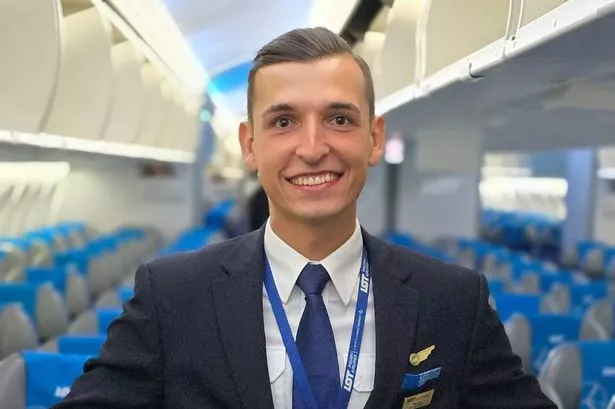Mateusz Kowalewicz, 29, has visited all the ‘New 7 Wonders of the World’ and has ticked off some incredible experiences – but it’s not always smooth sailing
A jet-setting flight attendant has shared the ups and downs of his high-flying career – from lightning strikes and severe sleep deprivation to ticking off the world’s most incredible sights.
Mateusz Kowalewicz first got bitten by the travel bug as a teenager after participating in a school exchange with Israel – marking his very first journey abroad.
He soon started exploring Europe on a shoestring budget, hitchhiking to save money, before finally deciding to become a flight attendant so he could earn while doing what he loved. Mateusz, 29, hails from Białystok, Poland, and now resides in Warsaw, globetrotting for work.
Speaking to Polish media, he said: “It’s very hard to describe a typical month, because every single one is different. My airline operates three types of aircraft, which means it never gets boring, and the roster looks different every month.
READ MORE: I went to Disney’s private island for a day – I wasn’t ready for what was on offer
“My biggest travel achievement is visiting all the ‘New 7 Wonders of the World’. I owe a lot of that to my job – I visited four on layovers and flew to another using staff tickets.”
However, it’s not always plain sailing. Mateusz recounted an incident where one flight was struck by lightning, as reported by What’s The Jam. “It felt like someone flashed a camera straight in my eyes. A moment later, we heard from the cockpit that we had to turn back to Warsaw. The aircraft was fine, but logically it’s better to return and take another plane than risk finding out in Rome that the aircraft must be grounded.”
When asked about his biggest bugbear, he didn’t mince his words: “Not being able to fall asleep, especially in the East on long-haul layovers. “I’m a heavy sleeper, so any unexpected wake-up in the middle of the night because of time zones is awful.”
READ MORE: Underrated destination with 30C weather in January that rivals Thailand
What he relishes most is the unpredictability. “Sometimes you fly to Chicago on a layover and end up meeting a Polish priest who invites you to an American christening for nearly 200 people – and one of the guests is a passenger you met on a flight a few months earlier. Absolutely incredible!”.
His job has also afforded him the chance to indulge in bucket-list adventures like skydiving in Dubai and taking a seaplane ride in Mauritius.
As for travel dreams still on the list: “I’d like to climb Kilimanjaro, and I can see I’m being drawn towards Africa, which is the continent I’ve explored the least after Australia.”
For those hoping to follow in his footsteps, Mateusz’s advice is straightforward: “Language skills. It’s one of the key elements if you want to work in this profession.
“You must also be 18, have a high school diploma, be able to swim in case of a water landing, and you can’t have tattoos in visible places.”
Have you got a travel story to share? Email us at [email protected]



